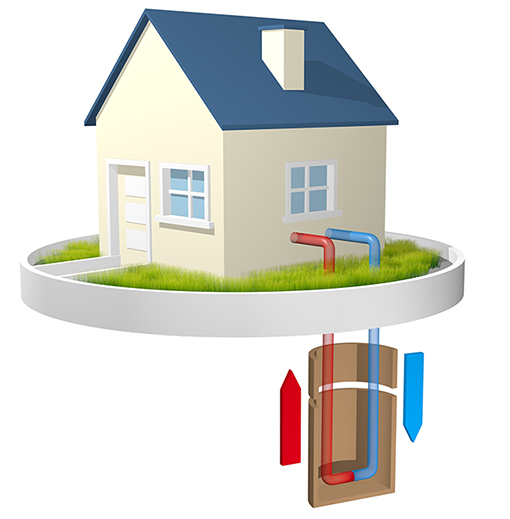Working with an underground loop system, geothermal heating and cooling systems utilize this constant temperature to exchange energy between your home and the earth as needed for heating and cooling.
In winter, water circulating inside a sealed underground loop system absorbs heat from the earth and carries it to the geothermal unit. Here it is compressed to a higher temperature and sent as warm air to your indoor system for circulation throughout your home.
In the summer, the system reverses and expels heat from your home into the cooler earth via the loop system. This heat exchange process is not only natural, but is a natural and highly efficient way to create a comfortable climate in your home.

Used where adequate land space is available, horizontal loops involve one or more trenches that are dug using a backhoe or excavator. High Density Green Geothermal Pipe is inserted, and the trenches are backfilled. Each trench ranges in length up to 300'.
The ideal choice for a geothermal heat pump when available land surface is limited. Well drilling equipment is used to bore small-diameter holes from 100 to 500 feet deep. After the pipes are inserted, the borehole(s) are filled with thermally enhanced grout.
Gaining popularity in "Cottage Country", Pond or Lake Loops are a great choice if an adequately sized body of water is close to your home. This is an affordable alternative as excavation costs can be virtually eliminated. A series of High Density Green Geothermal closed loops can be extended and sunk to the bottom of the water body. A 1/2-acre, 8-foot-deep pond is usually sufficient for the average home.
An open loop is used where there is an abundant supply of quality well water. The well must have enough capacity to provide adequate flow for both domestic use and the energy unit. Discharge water should be sent directly to a second recharge well.